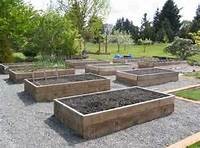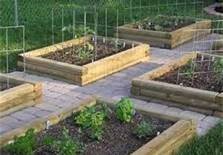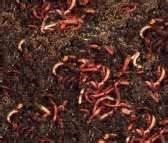If you are homesteading, you are likely developing a garden. With that, here are some Unique Gardening Ideas to Increase Yields
Given the state of the economy these days, gardening for some has evolved from a productive hobby to a necessary endeavor. Not only the economy but also food safety has some people concerned. You simply do not know, despite what you are told, what exactly goes into commercial food production as far as pesticides and fertilizers. Even after the product has been harvested there is the possibly of contamination of the foods.
Growing your own fruits and vegetables allows you to control what goes into the growing process and how the food is handled after harvesting. To some people, gardening is quite natural; they may have grown up helping grandparents or parents in their garden and naturally carried the tradition forward. Others, however, may not have been exposed to gardening as they grew up and thus may find the process a bit confusing and may not know where to begin exactly.
The First Step
Getting Started
Determine your hardiness/temperate zone. Typically, plants and seeds you purchase commercially will state when the best time is to plant depending on the temperate zone. Melons, for example, will require a much longer growing season than for example, lettuce. The melon plant or seeds would have to be planted early enough to give the melon plenty of time to mature before cold weather sets in, in the fall. Some temperate zones allow you to plant in early March while other zones can still have hard freezes at night. It is important that you know the temperate zone of your area.
Remember any plant can be started indoors from seed to allow more time for the fruit to mature if you have a shorter growing season than what the plant requires.
To determine your temperate zone search the internet of find an Almanac.
The Second Step
Determine what you want to raise, keeping in mind some vegetables may not be a favorite among your entire family. In addition, do you want enough for daily use during the growing season or do you want a surplus that can be preserved for the winter months. Remember family and friends may enjoy fresh vegetables, as well, so this can influence the size garden you need. Sharing homegrown produce with friends and family can be a wonderful experience because you have plenty to be proud of and you will want to share.
When some envision a garden, they see tractors tilling up acres of land and gardeners out in their large hats cultivating their plot all day long. Gardens can be as large as you want (provided you have the space) or as small as you want. A lot depends on how much area you do have for a garden, and how much care you can, or want to provide and the yield you expect. You will have to put some effort into your garden, so consider your physical capabilities, as well, when deciding on size.
Raised Beds or Row Gardens: What Will Work Best For You?
The Next Step
Deciding on a location and type of garden, you do have more than one choice to include raising vegetable in pots, window boxes, raised beds and row gardens.
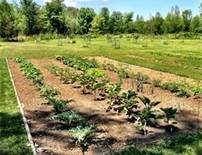 A typical row garden where plants are in clearly defined rows.
A typical row garden where plants are in clearly defined rows.
As you can see, it takes up a considerable amount of space, and once the plants are more developed it would be difficult to get between the rows. You would need a rather large space to allow enough room for the plants to fully develop and still have room to get between the plants to harvest the vegetables, water and cultivate. You may have the space but it might not get enough sunlight during the day, so this is something that must be considered as well. Lack of adequate sunlight has a direct effect on plant yields. As a rule, you would need at least six hours of direct sunlight daily.
A row garden can be as big or as small as you want. There is nothing saying you cannot have a row garden 10 feet by five feet, but the yield of course would be much less. Another option is a raised bed garden.
Two examples of raised bed gardens and you can use retainer wall stone or bricks to build a raised bed garden.
Note: It is not required that your raised bed be situated on soil, it can be on concrete or gravel or virtually any surface. If you have poor growing soil in your yard or you simply want smaller areas to work with a raised bed is ideal.
Typically, raised beds are placed in areas with maximum sunlight, so choose carefully because once built and filled with soil it would be extremely difficult to move them. Having a raised bed you build yourself means you are not limited to a specific location as you would be with a row garden. Raised bed gardens are quite common on rooftops if the building allows gardening. Each bed can be for specific vegetables or you can mix them up.
An easy way to build your beds is to purchase landscape timbers, which are typically eight feet long by three inches in height, so your bed can be eight feet long and then simply cut the timbers in half for a width of four feet. Two or three timbers high should be sufficient, and then fill in with growing soil/topsoil. You can maneuver around and in between the beds to do your weeding and harvesting without trampling the plants.
Source: Raisedbedvegetablegarden.org
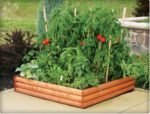 As you can see, this very compact raised bed garden has a variety of vegetables and herbs growing in the same bed. It is important that if you have plants such as cucumbers and certain tomatoes that vine out that you support them with stakes or trellises. If you have a chain link fence you might consider putting your raised bed close to the fence to use as a trellis. Cucumbers, once they start to vine, will need plenty of room along the ground or will need a trellis. Tomatoes plants will need to be supported using cages or stakes because once the fruit develops the weight can break the stems.
As you can see, this very compact raised bed garden has a variety of vegetables and herbs growing in the same bed. It is important that if you have plants such as cucumbers and certain tomatoes that vine out that you support them with stakes or trellises. If you have a chain link fence you might consider putting your raised bed close to the fence to use as a trellis. Cucumbers, once they start to vine, will need plenty of room along the ground or will need a trellis. Tomatoes plants will need to be supported using cages or stakes because once the fruit develops the weight can break the stems.
Get a Free Subscription to PREPARE Magazine
Now That You Have the Initial Steps Planned
A quick recap shows that you have determined your temperate zone; you also learned from the map when you can expect the last frost/freeze in your area. Once you know your zone, you can then begin deciding on what to grow and where to grow them. If you have limited space you can grow most anything in pots and window boxes, but also raised beds are ideal for limited space and they yield as much if not more than the same space on the ground.
The reasons the yields are higher in raised beds is first, you have likely purchased the soil, which means it has the correct pH levels, not full of clay, and may even have fertilizer in it depending on the type you bought. Secondly, weeds are easier to control in raised beds. Those new to gardening may fail to realize the impact of weeds on crop yields. Weeds are invasive and they steal nutrients, water and even sunlight. Thirdly, the soil in raised beds is easy to aerate; in other words, it is easy to keep the soil loosened around the root system.
Soil composition is a factor on how well your plants do. Even though you spent days tilling up your garden patch, the soil will compact once it rains if it is heavy with clay. Plants need well-aerated soil so the roots get plenty of oxygen. A plant’s yield is directly proportionate to its root size. Compacted soil restricts the roots respiration, which the root needs so it can absorb nutrients more efficiently. Heavy compacted soil means smaller roots and lower crop yields.
Worms to Help Your Garden
 To help increase crop yields in a row garden or even raised beds where the soil has clay in it or is a poor growing medium in general, you can enlist the aid of worms. Worms are an important part of the growing cycle. You can purchase what is called “red worms” from most home and garden stores or on the Internet. The worms will find you however, if you have the proper environment. You can also find them yourself under leaf piles, rocks and logs, but first, why worms?
To help increase crop yields in a row garden or even raised beds where the soil has clay in it or is a poor growing medium in general, you can enlist the aid of worms. Worms are an important part of the growing cycle. You can purchase what is called “red worms” from most home and garden stores or on the Internet. The worms will find you however, if you have the proper environment. You can also find them yourself under leaf piles, rocks and logs, but first, why worms?
Worms aerate the soil as they move through it, even soil heavy with clay if there is enough organic matter present as a food source. The worms digest organic matter and leave behind what is called casting or vermicompost, which is high in the nutrients that your plants need. It takes a surprisingly small amount of earthworms to keep your garden and plants in top shape. To get started you need to begin composting organic matter.
Eggs shells, banana peels, spoiled fruits and vegetables are organic matter that worms love. You can compost in a shallow plastic container with holes in it for air and you will also need a lid that allows air in. Start by placing a layer of soil and newspaper strips in the bottom and then add a few worms and a layer of the organic material.
Once you see the kitchen waste has broken down, add some more soil and organic matter. The worms will grow in size and number quickly. Once you feel you have enough, spread the container contents on your garden along with the worms. You cannot leave the worms in the bin indefinitely because they cannot survive that long in their own casting, so make sure you remove the compost to your garden on a regular basis.
You can also place the newspaper strips and kitchen waste directly on your garden patch to encourage worms to come to you.
What Not To Use as Compost
Do not compost meats, oils, bones, animal or human waste. Do not compost plants you are not familiar with or ones known to have a disease. You certainly do not want to compost poison ivy, oak, or other poisonous plants.
Now you can decide if you want to start seeds indoors for some of those plants that require a longer growing season or if you want to purchase seedlings from a nursery or you can do both.
Related Content
- Don’t lose the dream. Start Urban Homesteading!
- Why Self-Reliance is the Key to Happiness (and How to Cultivate it in Yourself
- Why You Should Never Skip Crop Rotation in Your Garden
- Home Gardening 101: A Beginner’s Guide to Growing Your Own Vegetables and Fruits
- How to Build a Homestead Fermentation Cellar



